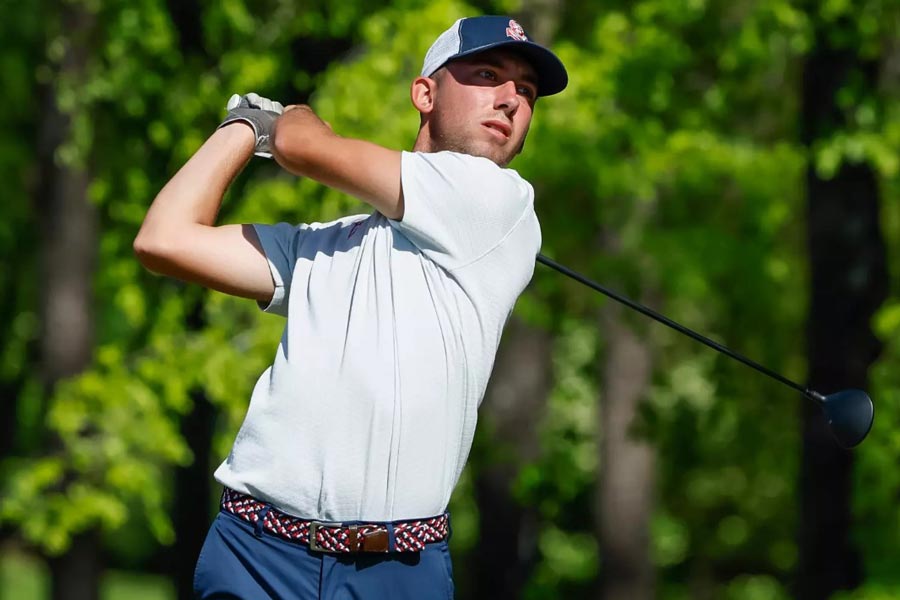
Every other week, our Highlanders are using their education to do extraordinary things. Here, we’ll highlight some notable mentions from local, regional, national and international news media. Whether our students, alumni, faculty and staff are featured as subject matter experts in high-profile stories or simply helping make the world a better place, we’ll feature their stories.
Sport authority
A sports administration graduate who found himself drawn to journalism recently accepted a beat at one of the largest newspapers in the Lone Star State.
Ronald Harrod Jr. ’21 started as the high school sports reporter with the Dallas Morning News on Sept. 16. Harrod covered similar territory last year at The Roanoke Times before moving on to the San Antonio Express-News.
According to the Texas Press Association, the Dallas Morning News, with a circulation of 137,000, is its state’s second-biggest paper, just behind the Houston Chronicle by fewer than 6,000 readers.
To kick off his tenure in the bleachers, the Morning News on Sept. 18 hit the young sportswriter up with a series of quick-fire questions, “Five things you need to know about new SportsDay reporter Ronald Harrod Jr.”
Those cover his background – including a shout-out to his alma mater – as well as his hobbies, the best sporting event he has attended and his favorite athlete. His final question, about other career paths he may have taken, reveals that Harrod’s future may have been cast in part by an internship he took with the Washington Commanders football team.
“Since I majored in sports administration in college, I had a choice between working on the business side for a team or becoming a writer,” he told the Morning News. “And I chose the latter.”
You can follow Ronald Harrod Jr. on X (formerly known as Twitter) via @ronharrodjr.
Playing through
A star of the links at Radford has continued his winning streak beyond graduation.

Earlier this month, Bryce Corbett ’24 won the Middle Atlantic Amateur Championship in Chevy Chase, Maryland. Founded in 1902, the Middle Atlantic Golf Association is one of the oldest amateur golf organizations in the country, according to its website.
“Corbett shot rounds of 63-67-71 to finish 9-under and secure the wire-to-wire win,” Amateur Golf wrote during the first week of October. “He was the only golfer to finish the championship under par.
“He finished with 19 birdies and 10 bogeys at Columbia Country Club through 54 holes,” the golfing website declared.
While a student at Radford, Corbett built an impressive record, earning spots on the 2024 First Team All-Big South team and the 2024 Big South All-Tournament Team.
And just as he departed, another promising prospect appeared – his younger brother, Tate Corbett, who joined Radford’s golf program in August as a transfer from the University of Lynchburg, where he scored two top 20 finishes and another in the top 10.
Viral analysis
Thanks to modern technology, it’s never been easier to share information.
By that same equation, however, threats and hoaxes are often able to spread briskly and widely, particularly when it comes to incidents or claims involving schools.
A Sept. 26 story by Radio IQ/WVTF recently examined ways in which students can deal with threatening posts without making them go viral, and reporter Roxy Todd spoke with two experts from Radford University.
Associate Professor of Social Work Philip Mongan said students and parents should familiarize themselves with ways to report suspicious posts to the school other than actually sharing them.
Circulating such threats, according to Professor of Communications John Brummette, “can cause a contagion effect.
“This really contributes to the issue,” Brummette said. “And gives the people who are posting the content what they want, and that’s for this content to go viral.”
Brummette is the director of Radford’s Social Media Analytics and Research Technology (SMART) Lab, and he and other students are currently using social media data to try to understand more about threatening posts, the story said.
One upside to the ease with which posts can be shared, however, is that they can sometimes act as distress signals.
“One thing we know about school shootings and extreme school violence is there’s always what we call leakage,” Mongan said, adding that perpetrators “will always drop a hint. They’ll say something, they’ll do something, and after the fact, we always go back and go, oh, it should have made sense to us. Since social media came about, it’s given us free range to do that.”